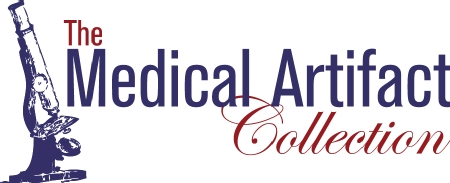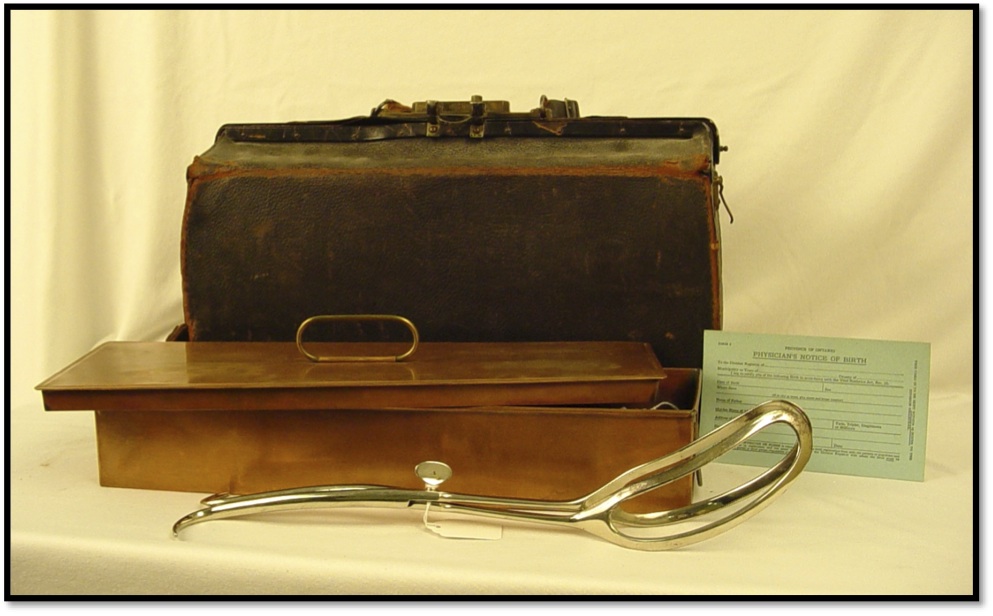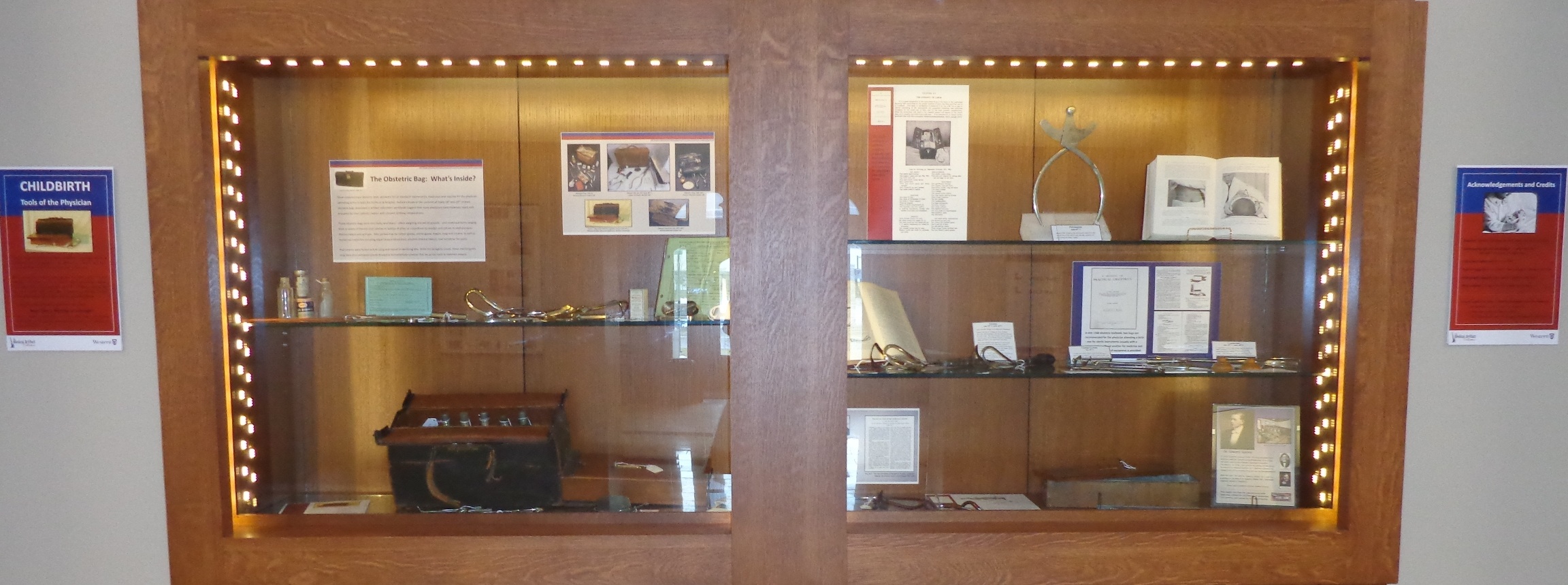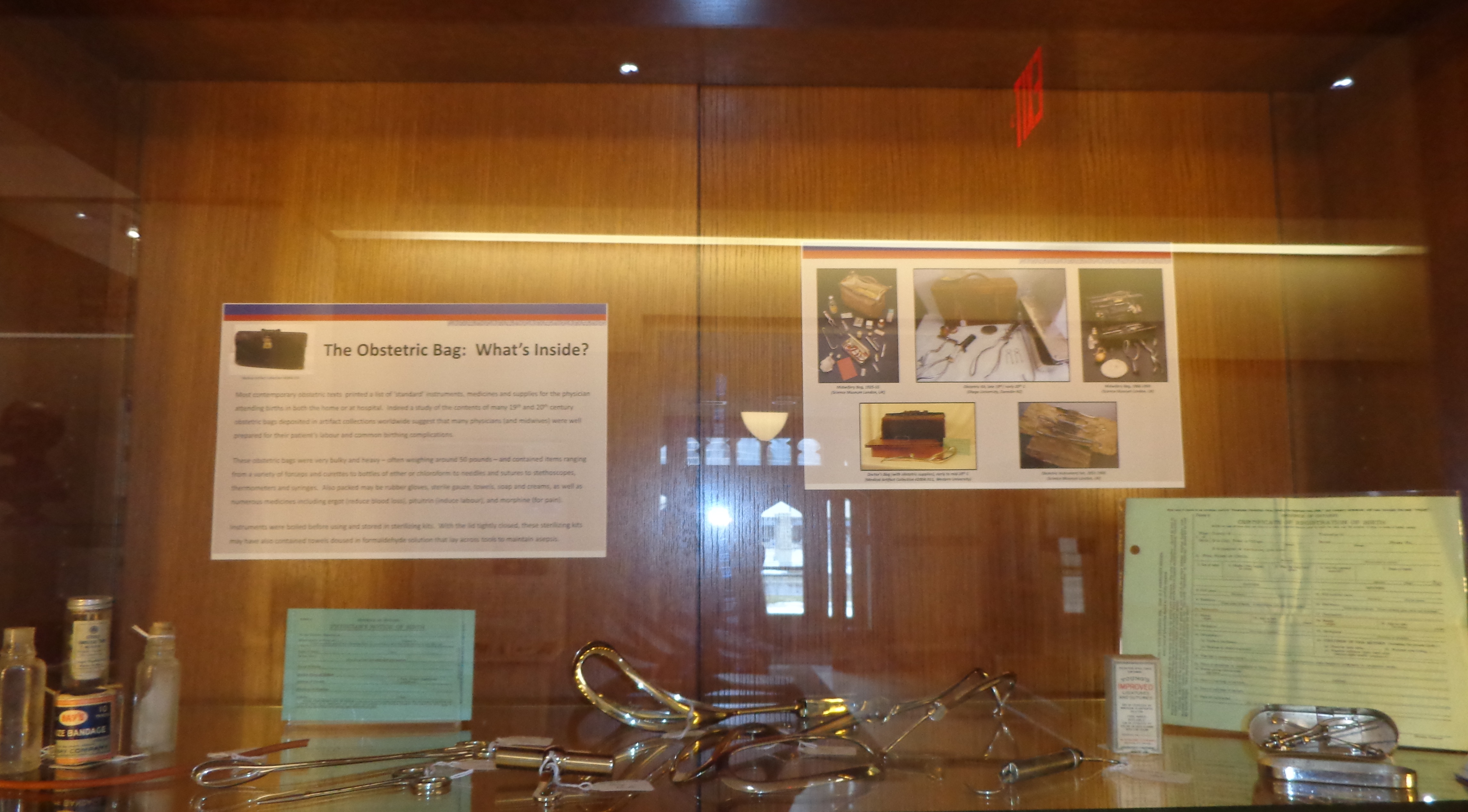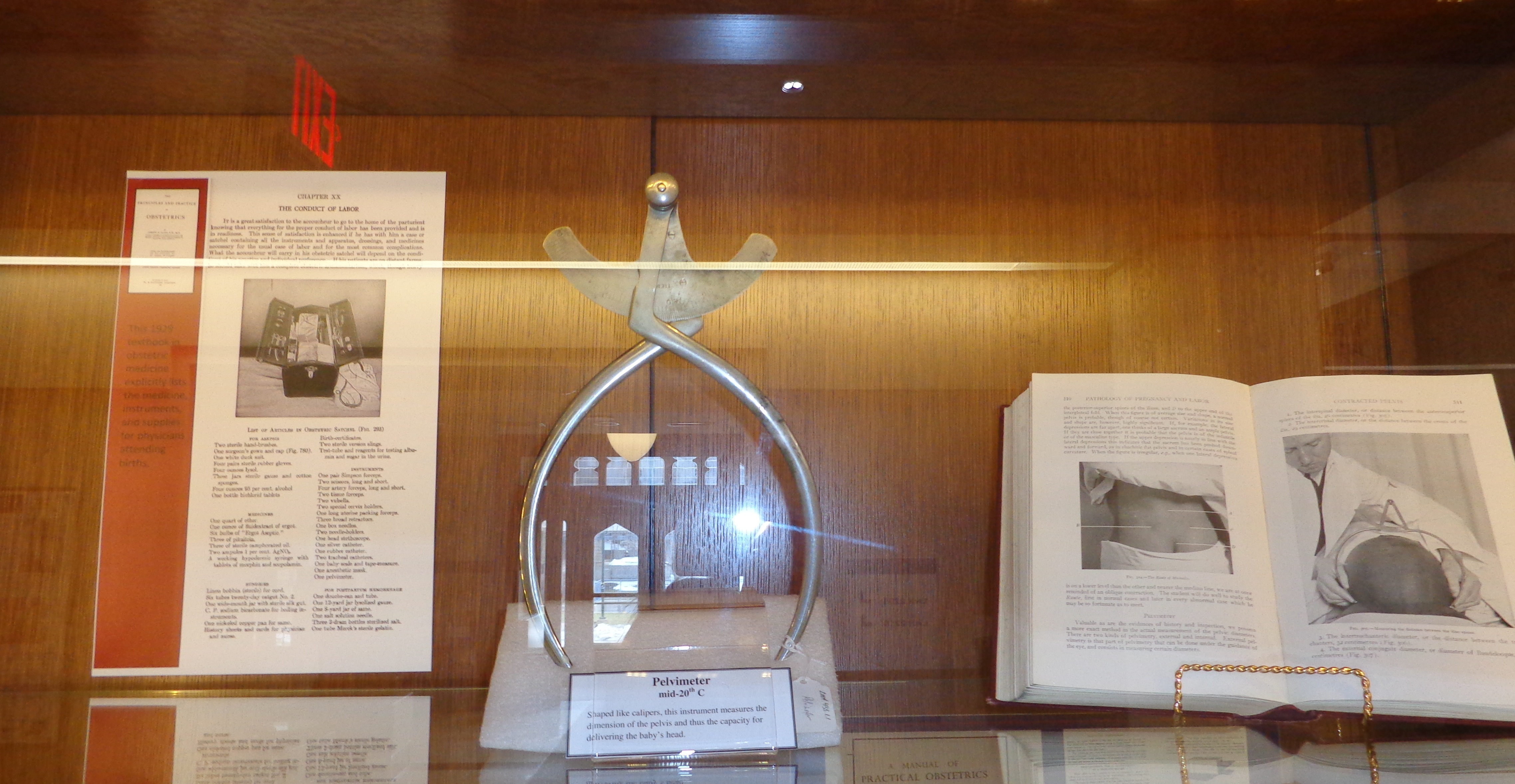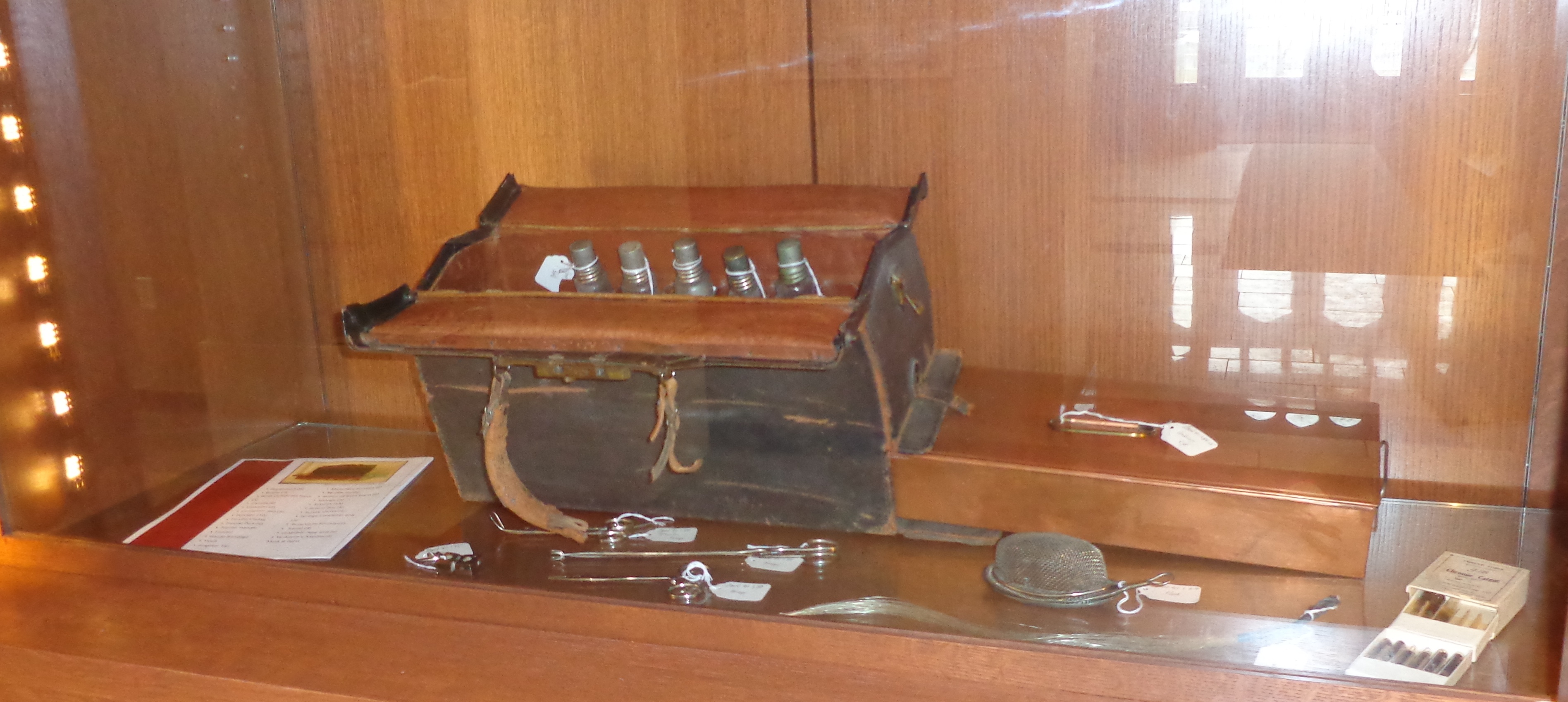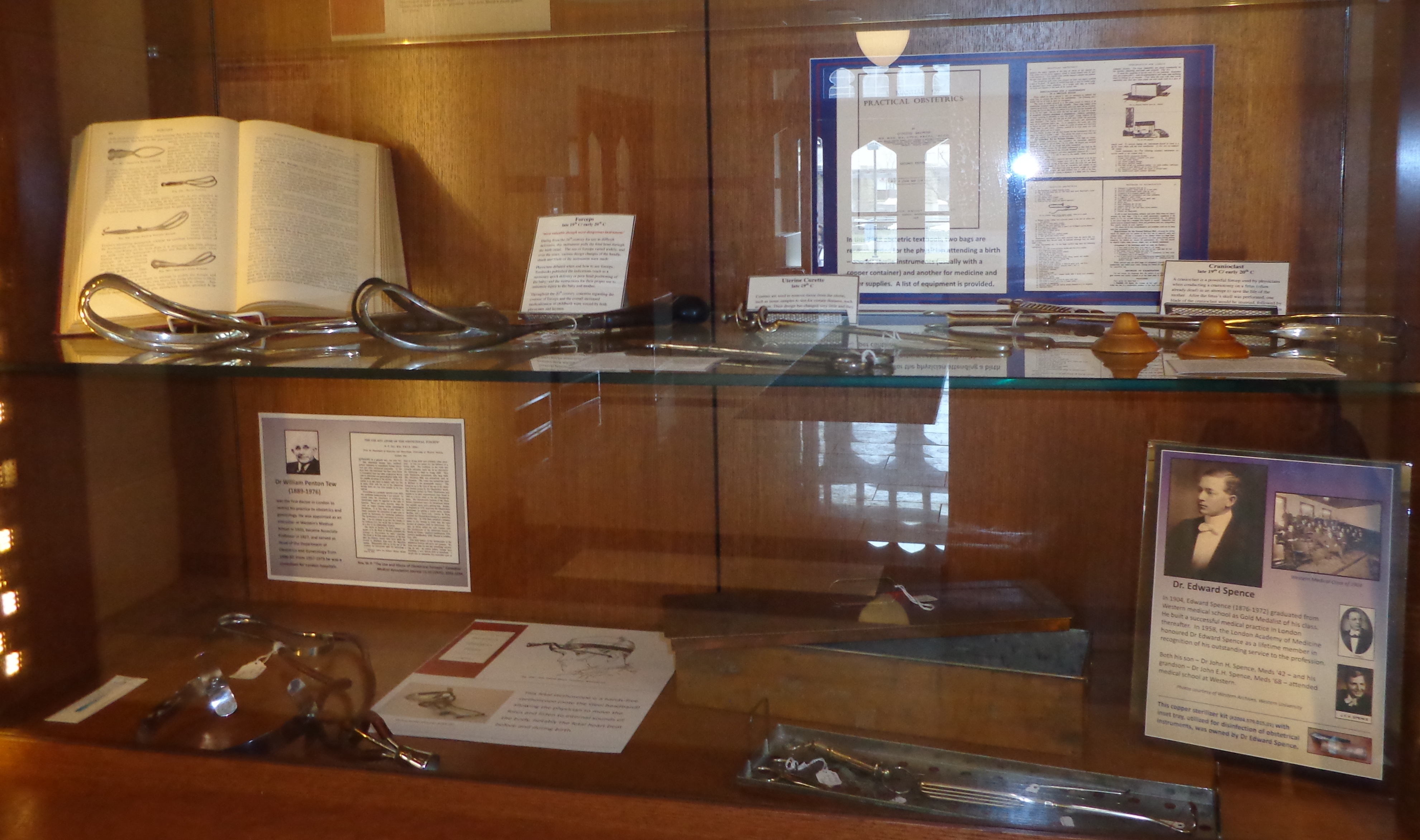Lawson Hall, 2nd Floor Dr. William Peyton Tew (1889-1976) | Dr Edward Spence (1876-1972) | The Obstetrics Bag | Other Featured Obstetrical Instruments Research: Shelley McKellar; Michelle Hamilton; Jasmine Fong Exhibition Design and Installation: Shelley McKellar; Michelle Hamilton; Jasmine Fong Collections Technician: Jasmine Fong Archival Support: Anne Daniel; Theresa Regnier Western Archives Photographic Support: Barry Arnott Western Archives Office Support: Morgan Sheriff; Brenda Hutcheson Learn more about the history of childbirth and obstetric medicine by reading: • Wendy Mitchinson, Giving Birth in Canada (2002) • Jacalyn Duffin, History of Medicine (2010) • Ivy Lynn Bourgeault, Push! The Struggle for Midwifery in Ontario (2007)
Childbirth: Tools of the Physician
February 2013
Exhibit Themes
Acknowledgements and Credits
You are using a browser that is not standards-compliant. The information on this Web site will be accessible to you, but for a list of Web browsers that comply with the World Wide Web Consortium standards, please visit our Web standards page.
